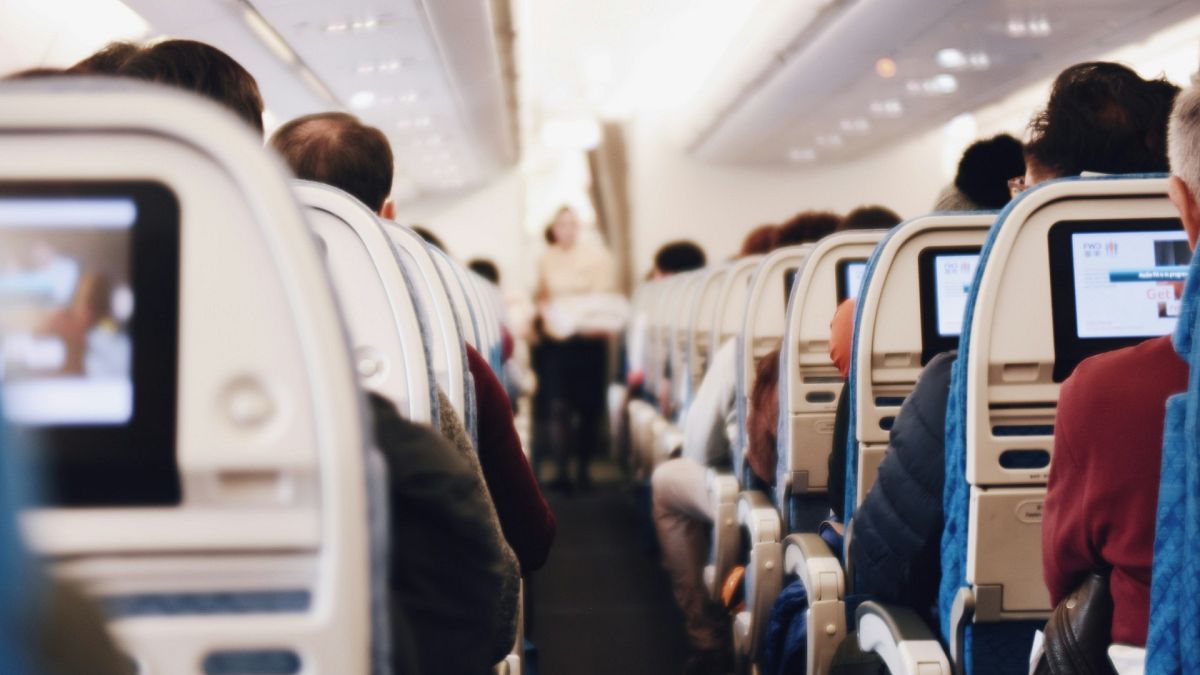A long-haul flight attendant on where germs are hiding and why COVID masks are still a good idea.
The start of autumn means one thing for many of us: flu season. Searching for an endless summer, we chase the sun in search of warmth and daylight. While a holiday is relaxing, countless people say they get sick after travelling on a plane, even if they have sanitised everything in sight.
Now, a long-haul flight attendant has taken to Reddit to give travellers advice on staying healthy while on a plane.
Here’s everything you need to know about the unexpected places germs are hiding – and how you can prevent yourself getting ill on your next flight.
What are the dirtiest places on planes?
Reddit user and flight attendant, who calls themselves HausOfDarling on the platform, posted in an r/AskReddit thread about some of the most filthy places on an aeroplane.
“I ALWAYS recommend you never, ever, ever, EVER use or put anything in the seat pocket. They are cleared of rubbish but are never ‘cleaned’,” they wrote.
Adding to the horror, the user reeled off a list of unpleasant things cleaning crews have removed from these small pockets, including “dirty tissues, sick bags, knickers, socks” as well as “gum, half sucked sweets, apple cores.”
It’s something few of us will think about, but a lack of cleaning means that other people’s germs can easily transfer to your belongings when they share the space in the seat pocket.
For instance, if somebody coughs on their mobile phone, then puts it into the pocket, plenty of the germs will remain there. When you put your own phone into the same spot, those germs could make their way to your hands in a matter of seconds.
With the quick turnaround of flights, large parts of planes are likely to harbour germs, despite the best efforts of cleaning staff.
Everywhere from safety instruction cards – often stored in seat pockets – to tray tables and lavatories are home to their fair share of dirt.
In fact, Insider magazine reported horrifying findings on swab tests done by the Canadian Broadcasting Corporation. The results showed some seat headrests teeming with Staphylococcus, E. coli, and Hemolytic bacteria, all germs that can cause the flu and other nasty bugs. The research also found that seat-back pockets tested positive for aerobic bacteria and mould as well as coliforms, and E.coli.
Cabin crew have also warned that as well as instruction cards, tray tables and lavatories – all fairly obvious – overhead bins and seat covers can also store invisible dirt.
The solution? Travelling with hand sanitiser and disinfectant wipes.
How can I keep myself free of germs while on a flight?
Before you get to your seat, place your bags in the overhead locker, then immediately clean your hands.
When you’re seated, read the safety instruction card then wipe it down, keeping it clean for the next passenger. Use more hand sanitiser before eating or drinking anything from your tray table; wiping that down won’t hurt either.
When you go to the lavatory, it’s important to remember that the toilets themselves are cleaned regularly – but the locks and door handles are not. Thoroughly wash your hands before leaving then use more sanitiser when you get back to your seat to ensure you get rid of as many germs as possible.
Cabin crew do say that seat covers are more likely to have been cleaned, but it’s not a guarantee.
If you’re a real germaphobe, you may want to consider investing in either a disposable or reusable seat cover before you fly.
Is the recycled air on planes making me sick?
While we’ve all heard horror stories about recycled air onboard planes being the cause of illnesses, it isn’t that straightforward.
According to research by the International Air Transport Association (IATA), the quality of supplied air on board an aircraft is much better than most indoor environments.
“The risk of transmission in the modern cabin environment is low for a number of reasons: passengers face the same direction, seatbacks act as barriers, air flow is from the top to bottom, and the air is also very clean,” IATA says.
In fact, cabin air is typically refreshed 20 to 30 times an hour – that’s about 10 times more often than in most office buildings.
High-efficiency particulate arresting filters – or HEPAs – make up half the air on board, with fresh air as the other 50 per cent.
Currently, HEPA filters are thought to have a 99.993 per cent efficiency rate when it comes to bacteria and virus removal.
Air flow direction is also a consideration on planes. On all aircraft, the direction is from top to bottom, and not along the length of the aircraft, meaning you won’t be breathing in other people’s germs for the duration of the flight.
Should I be wearing a mask on a plane?
While the days of mask mandates on planes, a hangover from the days of COVID-19, are seemingly in the distant past, people do still choose to wear them on flights.
But why? Overcrowded airports and plane cabins with no free seats could contribute to people getting sick, especially those with weakened immune systems. No matter how cautious you are, how much sanitiser you use and how much distance you put between yourself and that coughing person, germs can be capable of wending their way to you.
With that in mind, experts suggest that it’s worth considering wearing a face mask if you’re concerned about catching a bug while travelling.
“If you want to avoid a respiratory viral infection, then you should wear a mask, and perform hand hygiene frequently,” Dr. Bernard Camins, medical director for infection prevention at the Mount Sinai Health System, told AusAir, a filtration company.
Not all masks are made equal, experts say. While we all know by now that cloth face coverings are not the most effective, not all readily-available variations are particularly great either.
N95 and KN95 masks are often said to be the best options, not least because they boast high-filtration ability alongside a snug fit over the nose and mouth.
If you’re the only person on your flight wearing a mask, you will still be protected and, thanks to the air filtration system onboard, you’re actually likely to pick up fewer germs than on the ground.
So, if you’re considering masking up for your next flight, don’t ditch your face covering at the airport but wait until you’re in fresh air to breathe deeply once more. And, whatever you do, don’t forget to make hand sanitiser your best friend for the duration of your trip.



